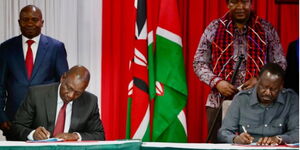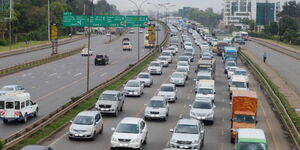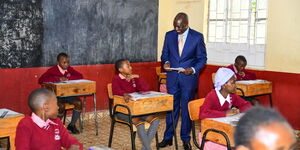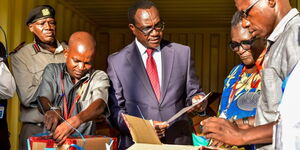The Kenya Meteorological Department issued their March-April-May long rains forecast listing seven regions set to receive rainfall during this period.
According to the weatherman, it is likely that several areas will have a generally poor to fair distribution of rainfall in both time and space. The onset of the season is expected to be normal to late-onset, with occasional dry spells. Further, occasional storms are likely to be experienced in some parts of the country during the season.
Kenya Met noted that the season’s average rainfall would be 300mm with various regions across the country set to experience near to above-average rainfall, near to below-average rainfall, and below average rainfall.
In their advisory, the counties of Nyandarua, Nyeri, Kirinyaga, Murang’a, Kiambu, Embu, Meru, Tharaka Nithi, Eastern Laikipia, and Nairobi are likely to experience rainfall during the season, with some breaks. The expected rainfall amounts are likely to be near below the season’s long-term average.
Kenya Met announced that the onset of the long rains during this period was expected to be during the fourth week of March to the 1st week of April. The cessation of the long rains would be from the 3rd to 4th week of May. The distribution of the rainfall is forecasted to be fair.
In the Homa Bay, Migori, Kisumu, Busia, Siaya, Narok, Bomet, Kisii, Nyamira, Kericho, Nandi, Kakamega, and Vihiga counties, rainfall is expected to continue from February into the season, with occasional breaks. Rainfall is likely to be near to above the long-term average amount.
Rains in these counties, which encompass the Lake Victoria Basin, South Rift Valley, and some parts of the Highlands West of the Rift Valley, will continue till June amidst the good distribution of the rainfall pattern.
The long rains in Nakuru, Baringo, Western Laikipia, Elgeyo Marakwet, Uasin Gishu, Trans Nzoia, Bungoma, and Southern West Pokot counties are forecasted to begin in February followed by a dry spell till the 4th week of March to the 1st week of April.
These counties which make up the Central and North Rift Valley region, will have an extended rainfall period till June but with a distribution of near to below the long-term average amount.
Turkana, Samburu, and North West Pokot will experience rainfall amounts that are likely to be near to below the long-term average for the season. Onset of rainfall in these parts is expected during the 1st to 2nd week of April but occasional rainfall is forecasted in March.
In the Southeastern lowlands of Machakos, Kitui, Makueni, Kajiado, Tana River, and Taita-Taveta counties, rainfall is expected to begin during the 4th week of March to the 1st week of April. However, Kenya Met forecasts occasional rainfall in February followed by a dry spell. The rains are expected to cease over the 3rd to 4th week of May. Rainfall is likely to be near to below the long-term average for the season.
In the North Coast region of Lamu, coastal parts of Tana River, and northern parts of Kilifi, rainfall is expected to begin during the 2nd to 3rd week of April. Rains in the South Coast region of Mombasa, Kwale, and southern parts of Kilifi are forecasted to begin in the 4th week of March to the 1st week of April. In both regions, the rains are expected to continue till June.
In areas that will experience above average rains, Kenya Met noted several key sector impacts such as flooding, landslides and mudslides, food insecurity, destruction of infrastructure, displacement, an outbreak of water-borne diseases, the rise of GBV and protection cases, and marginalization of vulnerable groups.
To avert this, the weatherman recommended mitigation measures such as gender and PWD-sensitive early warning and advisories, mapping of hotspot areas and risk assessments, and peace-building initiatives. Other measures were the coordination of support for school feeding programs and strengthening mechanisms for coordination, partnership, and collaboration.
Kenya Met pointed out an upsurge in conflicts, food insecurity, acute malnutrition, trauma and psychological impacts, increase in school dropouts, increase in child abuse cases and incidences of wildfires as key impacts in areas with below-average rainfall.
To combat this, Kenya Met advised mapping of drought hotspots and conflict hotspot areas, coordination of drought-risk rapid assessments, and implementation of school meals programmes. On a broad level, the weatherman stressed strengthened coordination, partnership, and collaboration among all sectors.












